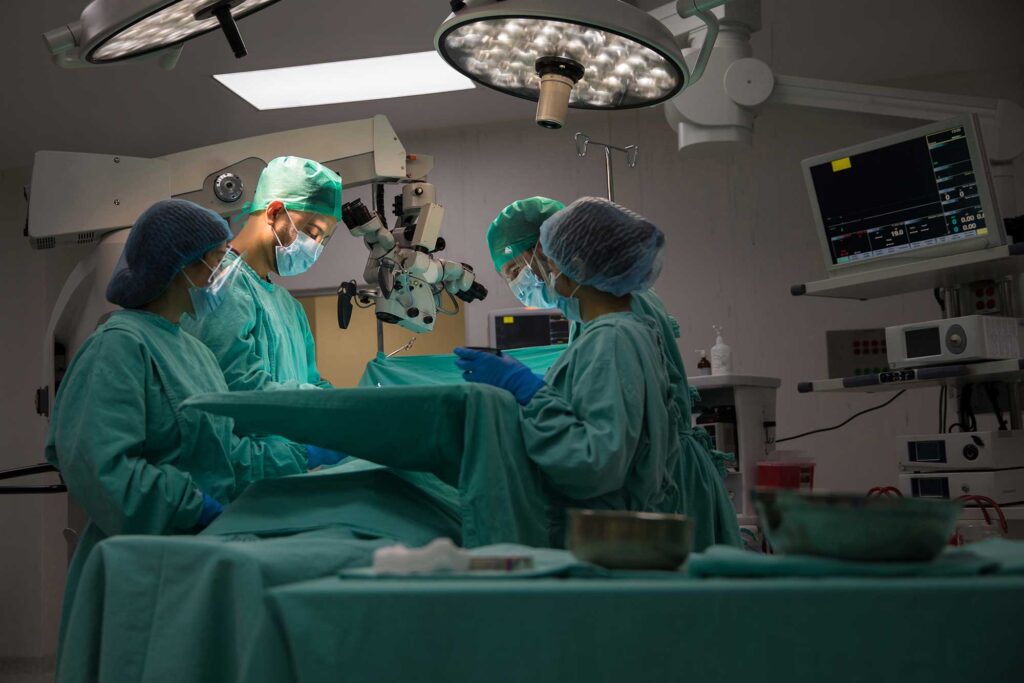Where do you think artificial intelligence will start in hospitals?
The most popular view of AI in hospitals is probably the vision of a machine augmenting the physicians and surgeons. However, there are other much more mundane aspects of hospital operations and administration that will likely start using Artificial Intelligence based programs much before the advent of the A.I. physician.
Predicting Hospital Traffic with AI
Complex problems like predicting traffic in extremely busy cities have been solved using A.I. algorithms that take into effect enormous amount of data and variables. Weather patterns, traffic volumes, likelihood of accidents, real time information on traffic flow and a host of other parameters effect the travel times.
In a lot of ways, the same functionality is needed in a hospital environment for patients and their families.
The lack of information and lack of transparency of the hospital processes can add to the stress of taking a loved one through the hospital experience. If there is a clear map of what is expected during each visit with some reasonable forecast of how long it would take, that will make the experience a lot less stressful.
Dealing with Unplanned Events in the OR Requires Artificial Intelligence
In departments such as the OR there are always unplanned events that the staff needs to respond to. Patients coming in with tests that are not complete, patients falling sick, staff shortages, lab closures, equipment failures and other events can cause unplanned delays. Carefully laid out daily schedules are frequently thrown out of the window due to these unpredicted events.
Predicting these times in the hospitals cannot be solved by traditional programming, since the variables and factors that contribute to the variations in flow are too many. However, this is where algorithms that utilize Artificial Intelligence can excel.
Using these machine learning techniques, we can take in extremely large datasets of measurement data over several months and years to look for patterns that would be good indicators for prediction of times and delays.
How TAGNOS Solves Complex Hospital Traffic Problems
The engineering team at Tagnos is solving some of these complex problems by combining the historical data with real time tracking data that is available when patients, staff and equipment are tracked using the Tagnos sensors.
When this kind of data is available, it is possible to build a learning algorithm that can process large amount of historical data and build learning models.
When tracking and other real-time data is superimposed on this and queries are performed to predict wait times for various departments, the Tagnos application can start to lay out a plan of care for the patient. It will detail each step and the time it would probably take for each of them.
Predicting Equipment Movement Patterns
When equipment that is frequently moved around the hospital is tagged with the Tagnos sensors, we can look at the movement patterns of the equipment. Using A.I. algorithms we can predict where equipment is needed in terms of the quantity and time. When required equipment is available as and when they are needed delays in the system can be reduced.
Estimating Surgical Procedures Start Time and Duration
Using these techniques for Artificial Intelligence in Hospitals, Tagnos is starting to predict the estimated start time and the duration of surgical procedures.
When these times are updated, Tagnos can send real time alerts to patients and their loved ones. Hospitals can even take advantage of the specialized visitor dashboard that can be put in waiting areas where patient’s families can get the status of their loved ones directly from the screen.
>> See What Can Orchestration Intelligence Tools Do For Your Hospital?
Self-Learning Functionality Baked In
These algorithms are equipped with self-learning functionality so the system tunes itself as it is learns more about the hospital environment over time. Over a period of time there would be an opportunity to utilize these algorithms with training data gathered from other hospitals.
Add Voice and Image Recognition
Voice and image recognition have gone through these kinds of leaps in the last few months and years to the point that computer vision and speech capabilities are coming very close to human perceptive abilities.
>> See If you want to know something just ask
Result? See the Mundane in Hospitals Benefit from Artificial Intelligence!
Utilization of these training algorithms for hospital logistic problems to create such applications can have far reaching benefits for the hospitals.
Knowing the predicted times greatly improves the patient experience. The surgical staff can also prepare and react better to delays since the cascading effect of unforeseen events is readily available. Cleaning staff can be better prepared. Such predictions and analysis will lead to efficiencies that can increase the throughput of patients that can flow through the hospital.
>> See Patient Flow and Smart Data: Ideal Together
If you are looking at innovative initiatives within hospital environments to implement Artificial Intelligence in Hospitals and would like to work with Tagnos please feel free to drop us a line.
About TAGNOS
TAGNOS is the future of clinical automation software solutions with Artificial Intelligence. TAGNOS is the only platform offering predictive analytics utilizing machine learning and RTLS. This groundbreaking platform leverages historical patient data continuously and adjusts operational intelligence to provide sustainable improvement to both the patient experience and metrics.
TAGNOS provides clinical systems integration, customizable reporting, dashboards, alerts, critical communication with staff and family to improve turnaround times. TAGNOS supports patient flow, workflow orchestration, and asset management.
In the course of 13 months, hospitals see a 12.7% reduction in its overall cycle time – saving an average of 40 minutes from each case and over $1.6M per year – more than 11x the typical investment.
Note: We originally published this article on 08/06/2018, and have updated it.


